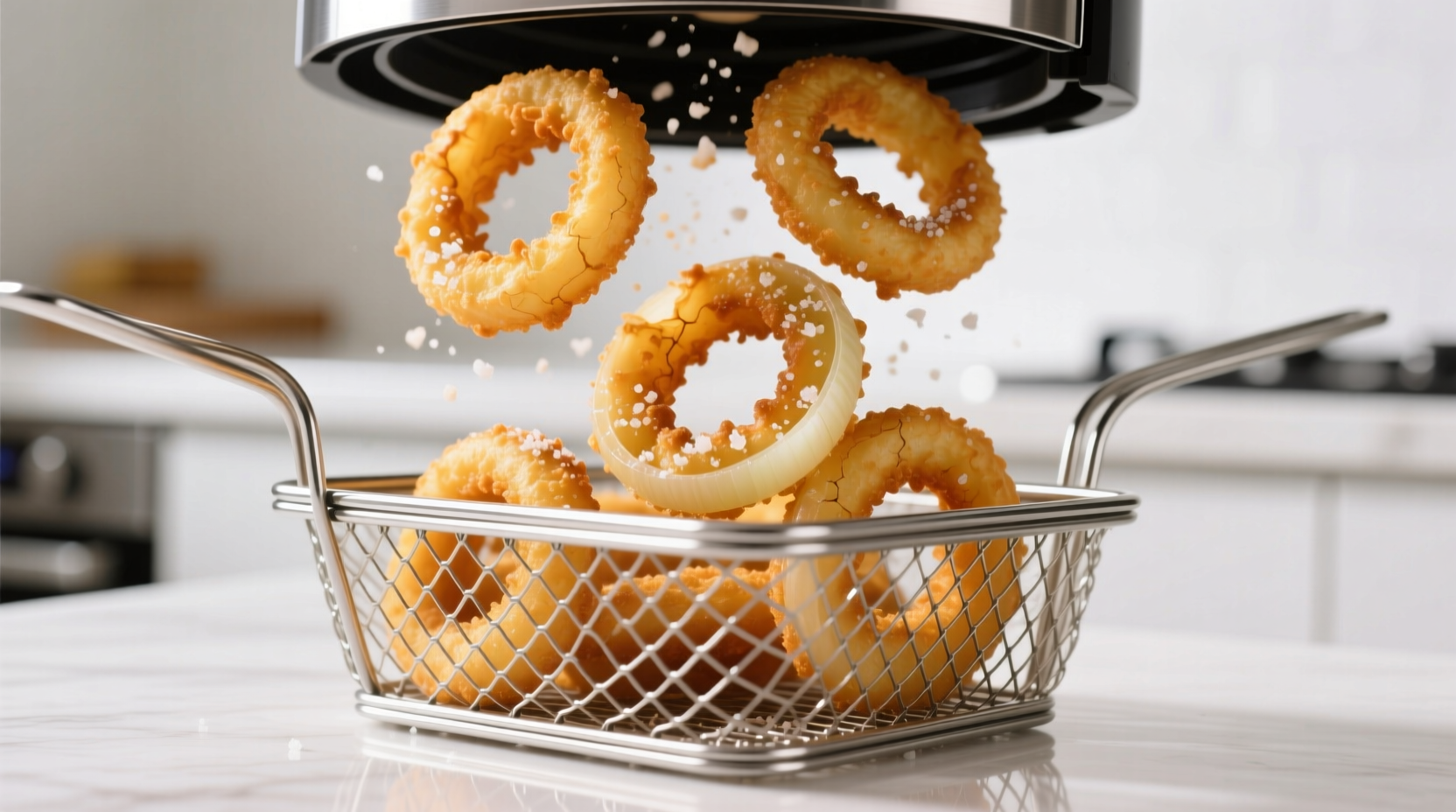Why Air Fryer Reheating Beats Other Methods
Leftover onion rings often turn soggy when reheated improperly. The air fryer's rapid air circulation technology solves this common problem by creating a crispy exterior while gently warming the interior. Unlike microwaves that create steam (leading to limp results) or conventional ovens that take too long, the air fryer delivers restaurant-quality crispiness in minutes.
| Reheating Method | Time Required | Crispiness Result | Texture Consistency |
|---|---|---|---|
| Air Fryer | 3-5 minutes | Excellent (9/10) | Evenly crispy throughout |
| Oven | 8-12 minutes | Good (7/10) | Exterior crispy, interior sometimes dry |
| Microwave | 1-2 minutes | Poor (2/10) | Soggy and uneven |
Step-by-Step Reheating Process
Follow these professional kitchen-tested steps for optimal results every time:
Preparation Essentials
- Don't overcrowd - Arrange onion rings in a single layer with space between each piece for proper air circulation
- Room temperature - Let refrigerated onion rings sit out for 5 minutes before reheating
- No oil needed - Unlike initial frying, reheating requires no additional oil
Perfect Temperature Settings
Set your air fryer to 375°F (190°C). This temperature strikes the ideal balance between reheating thoroughly and maintaining crispiness without burning. Higher temperatures risk scorching the exterior while leaving the interior cold.
Reheating Timeline
- Preheat air fryer for 2 minutes (critical for consistent results)
- Arrange onion rings in single layer in basket
- Cook for 3 minutes for standard thickness rings
- Flip halfway through cooking time using tongs
- Add 1-2 minutes if needed for extra-crispy preference
- Remove immediately when golden brown
Context Boundaries: When This Method Works Best
While air fryer reheating delivers excellent results for most onion rings, certain conditions affect outcomes:
- Frozen vs refrigerated - Refrigerated rings reheat better than frozen (thaw frozen rings first)
- Batter type matters - Works best with standard beer batter; panko-coated rings may require 1 minute less
- Size considerations - Large restaurant-style rings need 4-5 minutes; mini rings require just 2-3 minutes
- Moisture content - Rings with high moisture content (like those with added vegetables) may need additional time
Troubleshooting Common Issues
Even with perfect technique, occasional problems arise. Here's how to fix them:
Soggy Results
If your reheated onion rings lack crispiness, increase temperature to 400°F (204°C) and reduce time by 30 seconds. According to USDA food safety guidelines, properly reheated foods should reach an internal temperature of 165°F (74°C) to ensure safety while maintaining quality.
Burnt Edges
Lower temperature to 350°F (177°C) and extend time by 1 minute. The Culinary Institute of America recommends this adjustment for delicate battered foods to prevent scorching while ensuring thorough reheating.
Uneven Heating
Shake the basket gently at the 2-minute mark instead of flipping individual pieces. This technique, used in professional kitchens, ensures even exposure to circulating hot air without damaging the delicate batter.

Storage Tips for Optimal Reheating
How you store leftovers significantly impacts reheating success:
- Cool completely before storing to prevent steam buildup
- Store in airtight container with paper towel to absorb excess moisture
- Refrigerate within 2 hours of cooking (per FDA food safety recommendations)
- Consume within 24 hours for best texture results
Advanced Techniques for Perfect Results
For restaurant-quality results at home, try these professional chef techniques:
- Spritz method - Lightly mist rings with water before reheating to reactivate starches
- Double-crisp technique - Reheat at 350°F for 2 minutes, then increase to 400°F for final minute
- Seasoning refresh - Sprinkle with flaky sea salt immediately after reheating for enhanced flavor
Frequently Asked Questions
Can I reheat frozen onion rings directly in the air fryer?
Yes, but add 1-2 minutes to the cooking time. For best results, arrange frozen onion rings in a single layer without thawing first. The air fryer's rapid heating works well with frozen foods, though refrigerated rings generally yield slightly better texture.
How many times can I safely reheat onion rings?
For optimal quality and food safety, reheat onion rings only once. Multiple reheating cycles degrade texture and increase food safety risks. The USDA recommends consuming reheated foods immediately after preparation for best quality and safety.
Why do my reheated onion rings sometimes become tough?
Overheating causes the batter to lose moisture and become tough. Reduce reheating time by 30 seconds and ensure you're not overcrowding the air fryer basket. Professional kitchens typically monitor reheating closely as even 30 seconds can make a significant difference in texture.
Should I preheat the air fryer before reheating onion rings?
Yes, always preheat for 2 minutes. This ensures consistent temperature from the start, which is critical for reviving crispiness without burning. Most air fryer manufacturers, including Ninja and Cosori, recommend preheating for optimal results with battered foods.











 浙公网安备
33010002000092号
浙公网安备
33010002000092号 浙B2-20120091-4
浙B2-20120091-4